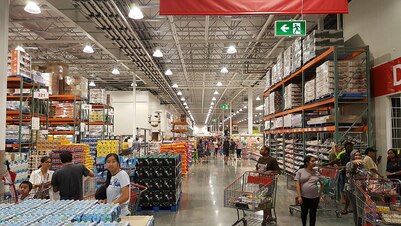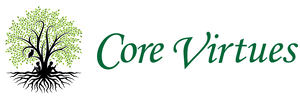|
When I was little, my family’s Thanksgiving tradition was going to national parks. It may have been a little unorthodox, but ended up being very fitting: we were certainly prompted to gratitude for the beautiful surroundings, and we were also prompted to gratitude by the lavish hotel Thanksgiving dinners we enjoyed without any prep or cleanup. On one of those trips, when I was about thirteen, we went to Zion National Park. Zion is in Utah, full of stunning cliffs and named by Mormons who must have thought that the staggering cliffs and vistas reminded them of the Promised Land. Everywhere you look in Zion, especially in the fall when we traveled there, you are met with overwhelming natural beauty, as the leaves change color and the red rocks tower out of deep valleys. I remember even at that age dreaming of living in one of the tiny cabins we saw along the winding road into the park, making a home in a peaceful, undisturbed environment kept pristine from the developed world outside. Costco is not exactly a peaceful, undisturbed environment. Another haunt of my childhood days, it shares with Zion National Park at least the sense of soaring space—in this case a warehouse space, where you can buy everything from plush hoodies to $20 handles of vodka. When I was young I loved going with my mom and trying all the samples, set up like stops on the Candy Land board as you wind your way through the concrete aisles. The shelves at Costco tower over you, overwhelming and yet inviting like the crags at Zion National Park.  Image #2 credit: ZidaneHartono (CC BY-SA 4.0 DEED) Image #2 credit: ZidaneHartono (CC BY-SA 4.0 DEED) The sense one has upon entering Costco is one of abundance. There is a food court where you can get a huge hot dog and a drink for $1.50, and a slice of pizza the size of your face for $2. There are cases of 2 dozen eggs or 36 cans of Diet Pepsi. And that’s just the food—you can usually find a large tent at Costco, lots of clothes (predominantly outerwear and sweaters, at this time of year), couches, flat screen TVs. Filling my cart with every material need I have, or even just wandering around Costco knowing I could do so, awakens certain feelings that I also had in Zion National Park when I was 13. At the time, hungry for beautiful places and beautiful feelings and never hungry for food, my experience at these beautiful national parks was of great abundance—great “scope for imagination,” as Anne of Green Gables would have put it. 13-year-old me would have found less scope for imagination at Costco than I have now, but I’ve grown since then. The self in my twenties can see affordances that 13-year-old me couldn’t see in this apparently sterile warehouse space—instead of seeing cliffs where fantasy armies or herds of unicorns could gather, I see a bottle of wine that could furnish a dinner party, a blanket that could keep a baby warm, a couch that could be the focal point of a future living room. I feel surrounded by possibility at Costco just as I used to feel—and still feel—surrounded by possibility in nature. But my world has expanded, and places that used to be uninteresting have— with the addition of more experiences and, frankly, more needs—become interesting. Money is more interesting when you’re trying to build a life with it. Houses are more significant when you imagine potential lives in them. People are more interesting when you remember to ask them questions, which I don’t always do. When I was young I used to promise myself I’d never forget my shimmering visions, the imaginary worlds that I could see outside the window of my fourth-grade classroom, the secret code that decorated my middle school notes and my high school SAT test booklet, the dramas and stories that used to carry me, almost levitating above the ground, through the banality of everyday life. And I haven’t forgotten. But I have made some discoveries. The enchantment that wrapped my imaginary world as a child has slowly expanded to encompass even places like Costco, or the car wash, or the long freeway crossing Indiana into Michigan. The enchantment is there, when I tap back into it—vividly apparent in the setting sun on golden November days, in the wind whisking leaves past my window, but also when I go to Target or meet a friend for coffee or see a bird in the airport. I won’t exaggerate—a lot of the time I let these things pass me by. 13-year-old me was vividly, intensely sensitive to every passing impression, looking out the window and scribbling down musings, imagining dramatic scenarios. Some of that energy and sensitivity go in unproductive directions now that I’m an occasionally stressed, often anxiety-ridden adult. Sometimes it’s easier not to look too closely, not to let my imagination run away—because it doesn’t always run away into beautiful places now. But on my best days, it all seems significant, even the errands to pick up 36 rolls of toilet paper. The mystical physicality of Zion National Park has transmuted itself into the soaring shelves at Costco, and the dramas I used to spin in my mind now meet me in the faces of the people who hand out samples and people I sit down with at dinner and people who call me while I drive. Now I see the beauty of the things themselves, and see that the drama was really inside them the whole time: inside the way that leaves drop at the beginning of winter, inside the human stories that are constantly unfolding around me. Reality is no longer a mere backdrop—reality is where I see the transcendent things that I always imagined, not only shining through, but shining within. Guest columnist Emily Lehman is Artistic Director at Core Virtues and has a monthly Substack newsletter, Dubious Analogies. This post is modified from its original form at dubiousanalogies.substack.com.
0 Comments
|
AuthorWrite something about yourself. No need to be fancy, just an overview. Archives
July 2024
Categories |
